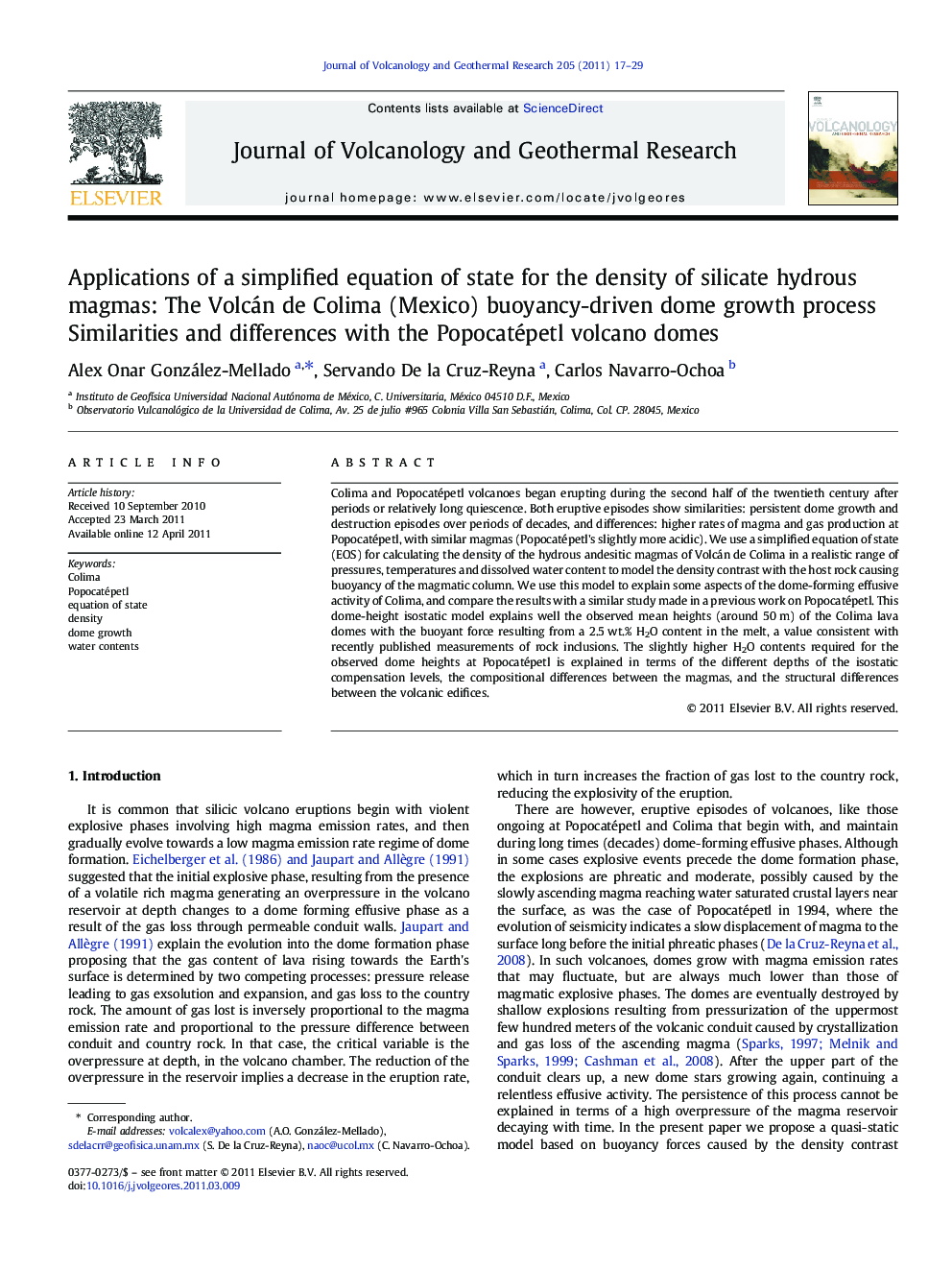| Article ID | Journal | Published Year | Pages | File Type |
|---|---|---|---|---|
| 4713897 | Journal of Volcanology and Geothermal Research | 2011 | 13 Pages |
Colima and Popocatépetl volcanoes began erupting during the second half of the twentieth century after periods or relatively long quiescence. Both eruptive episodes show similarities: persistent dome growth and destruction episodes over periods of decades, and differences: higher rates of magma and gas production at Popocatépetl, with similar magmas (Popocatépetl's slightly more acidic). We use a simplified equation of state (EOS) for calculating the density of the hydrous andesitic magmas of Volcán de Colima in a realistic range of pressures, temperatures and dissolved water content to model the density contrast with the host rock causing buoyancy of the magmatic column. We use this model to explain some aspects of the dome-forming effusive activity of Colima, and compare the results with a similar study made in a previous work on Popocatépetl. This dome-height isostatic model explains well the observed mean heights (around 50 m) of the Colima lava domes with the buoyant force resulting from a 2.5 wt.% H2O content in the melt, a value consistent with recently published measurements of rock inclusions. The slightly higher H2O contents required for the observed dome heights at Popocatépetl is explained in terms of the different depths of the isostatic compensation levels, the compositional differences between the magmas, and the structural differences between the volcanic edifices.
Research highlights► Application of a simplified equation of state (EOS) for magma density. ► Density of an hydrous andesitic magma. ► The magma buoyancy force generated by the contrast density. ► Modeling dome growth of Colima volcano, Mexico. ► Comparing the Colima and Popocatépetl dome growth episodes.
